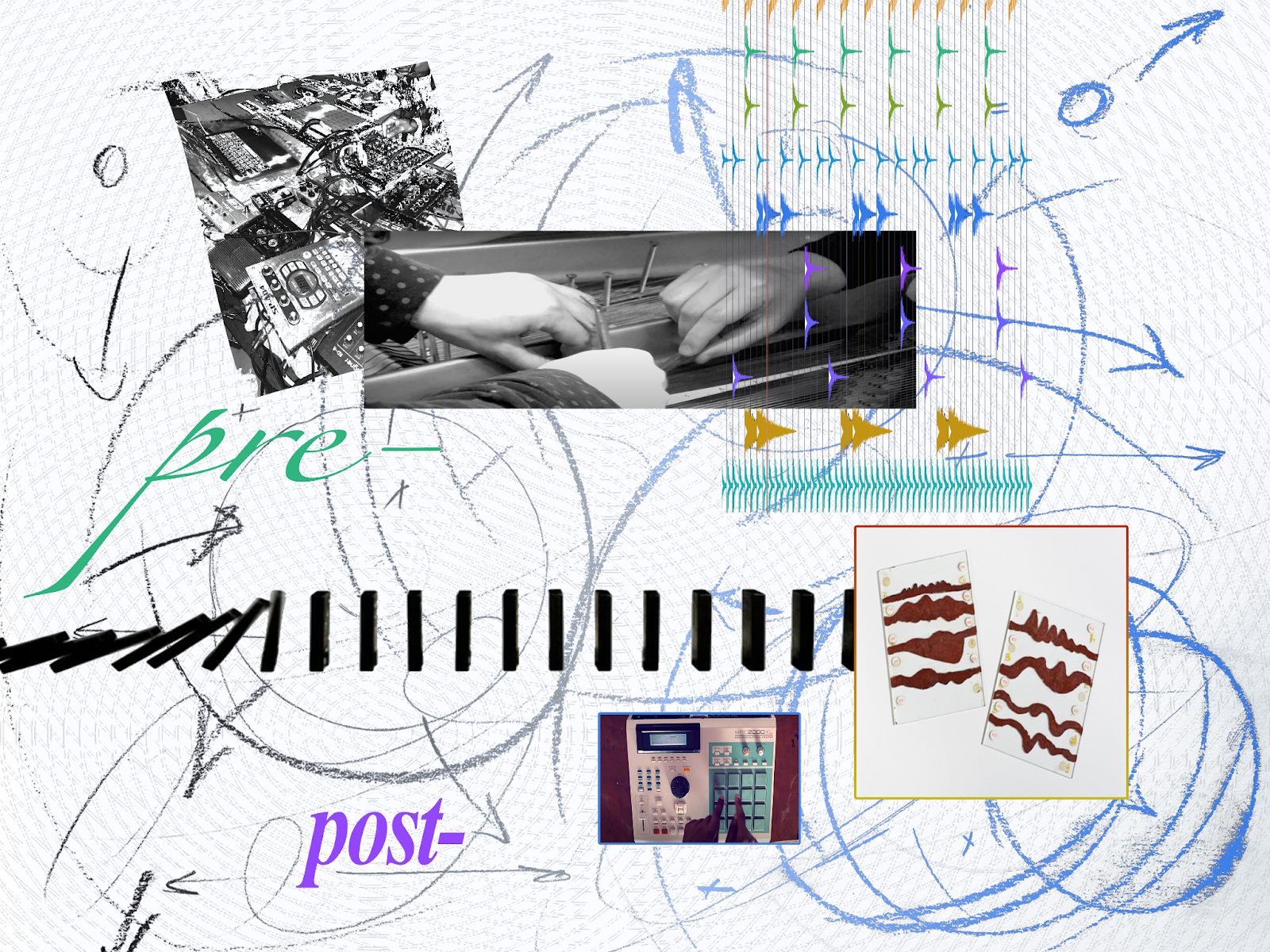Abstract
This multimedia essay is part of an ongoing collaborative project that examines the porous boundaries and theoretical connections that link conceptions of self, temporality, and composition. Drawing on our respective fields of practice in sound art and social anthropology, we engage with Henri Bergson’s person as a “vector of novelty on the edge of the present” and subsequent critiques that urge a de-naturalizing (and de-narrativizing) of the self. The work presented here comprises excerpts from collaborative writing, a 4-minute video, text-image fragments, and a compilation of audio voice notes, all in response to Erin Manning’s open-ended question, “How can we compose collectively, working both with past and emergent techniques, without holding fast to the security of habits, material or conceptual?” (Manning 2019, 367). Our approach to (co)composition attends to the co-emergence of experience and connection. We explore composition as mutual processes of emergence and exploration that take shape within and respond to specific spatiotemporal relationships and media. Rather than seeing collaboration as a process of intentionally narrating oneself to collaborators, research communities, and others (both known and unknown), the methods and approaches emerging through this project are designed as ways of unsettling any notion of fixity in these relationships. In this sense, this research is developed as a series of methodological and dialogical experiments in living with these questions and is offered as a contribution to critical debates on issues of research process, coherence, and integrity. Throughout, we invoke the “terminal present” as a term for a contemporary condition of temporal complexity, precarity, and stasis that doubles as a name for subjectivities produced in and through such conditions.
Notes on Contributors
Iain Findlay-Walsh (he/him) is a sound artist, music producer, researcher and teacher exploring sound-based and autoethnographic methods for the study of personal listening. He releases sound art and music under the name 'Klaysstarr Nets' (Entr'acte, Pan y Rosas), with related writing on sound, media and perceptual experience appearing in various peer-reviewed journals and books, including the Journal of Sonic Studies, and Organised Sound. By day, he teaches experimental music and sound art at the University of Glasgow where he co-directs the Immersive Experiences Lab on digital media reception. By night, he plays bass guitar and contributes sound design as a member of the doomgaze band, Cwfen.
Tristan Partridge is a lecturer in Global Studies at the University of California, Santa Barbara, and co-founder of the Center for Restorative Environmental Work. Tristan is a social anthropologist whose research addresses the dynamics of collaboration working with social movements and communities in struggle in Ecuador, India, and the USA. Tristan’s ethnographic work also draws on aural anthropology and visual methods: he has written text scores for The Center For Deep Listening and his fieldwork photography has been exhibited internationally. His books include Burning Diagrams in Anthropology: An Inverse Museum (punctum 2024) and Mingas+Solidarity (Pazmaen 2024).

This work is licensed under a Creative Commons Attribution-NonCommercial-NoDerivatives 4.0 International License.
Copyright (c) 2025 Iain Findlay-Walsh, Tristan Partridge

